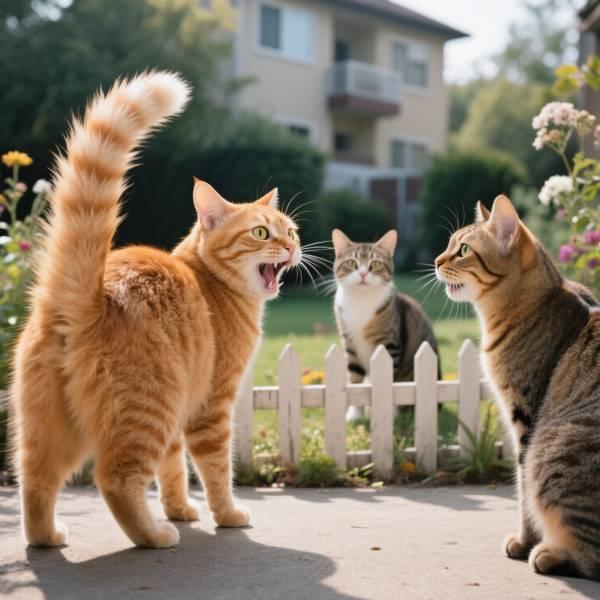Cats are often seen as mysterious creatures, but they are constantly communicating—if you know how to read their signals. Whether you're a first-time cat owner or a seasoned feline friend, learning about cat behavioral signals and communication methods is essential to building a strong, trusting bond with your pet.
In this guide, we'll decode the subtle language of cats by exploring their body language, vocal cues, and scent-based messages. Understanding cat behavioral signals and communication methods not only deepens your relationship but also helps detect early signs of stress or illness.
Why Understanding Cat Communication Matters
Unlike dogs, cats don’t always wear their emotions on their sleeves (or paws). They rely on a nuanced combination of behavior, posture, and sound to convey their feelings. Knowing how to interpret cat behavioral signals and communication methods is crucial for:
Preventing misunderstandings (e.g., when a cat hisses, it’s a warning—not aggression)
Recognizing anxiety or discomfort early
Enhancing your cat’s emotional and physical wellbeing
1. Body Language: The Foundation of Cat Communication
Tail Movements
One of the clearest cat behavioral signals and communication methods involves the tail:
High, upright tail: Confidence, friendliness.
Puffed-up tail: Fear or defensive posture.
Tail flicking rapidly: Irritation or overstimulation.
Wrapped tail (around you or another cat): Affection and trust.
Ear Positions
Ears are another key indicator in cat behavioral signals and communication methods:
Forward-facing ears: Alert and curious.
Flattened ears: Fear, stress, or anger.
Ears swiveling: Listening attentively or feeling uncertain.
Eyes and Pupils
The eyes are windows to a cat’s mood:
Slow blinking: Trust and affection (try slow-blinking back!).
Dilated pupils: Excitement, fear, or play mode.
Narrowed pupils: Discomfort or aggression.
2. Vocal Communication
Cats use over 100 different vocal sounds. Among cat behavioral signals and communication methods, meowing is one of the most versatile:
Meow: Can signal greeting, hunger, or attention-seeking.
Purring: Often contentment, but can also mean pain or anxiety in certain contexts.
Hissing or growling: Fear, threat, or defensive behavior.
Chirping or trilling: Happiness, excitement, or a way to get your attention.
Pro tip: Listen to the tone. A high-pitched meow usually means something different from a deep, throaty one. Understanding the nuances of vocal cues is central to decoding cat behavioral signals and communication methods.
3. Scent-Based Communication
Cats have scent glands in their cheeks, paws, and base of the tail. These are used to mark territory and communicate comfort or ownership.
Cheek rubbing on furniture or people: Marking territory and showing affection.
Scratching: Visual and scent marking.
Urine marking: Territorial or stress-related behavior.
Recognizing these actions as part of cat behavioral signals and communication methods helps avoid misinterpreting them as “bad behavior.”
4. Social Behavior and Interaction Patterns
Kneading
This instinctive behavior comes from kittenhood and is a signal of contentment. Cats often knead soft surfaces when they're relaxed—another component of cat behavioral signals and communication methods.
Grooming
Cats groom themselves for hygiene, but mutual grooming (called allogrooming) is a sign of trust. If your cat licks you, they’re treating you like family.
Hiding or Avoidance
Withdrawal or hiding can signal stress, fear, or illness. If sudden changes in these cat behavioral signals and communication methods occur, consult a vet.
5. Play Behavior
Play is crucial for cats—it’s not just fun; it’s communication.
Stalking and pouncing: Practicing hunting behavior, often in a playful context.
Biting gently: Often playful or affectionate, but monitor for overstimulation.
Ambushing your feet: High energy or boredom—a signal to engage.
Understanding play in the context of cat behavioral signals and communication methods ensures you're providing enough stimulation and avoiding misbehavior due to unmet needs.
6. Signs of Stress or Illness in Behavior
Changes in cat behavioral signals and communication methods can be early red flags:
Increased hiding
Aggression or sudden clinginess
Litter box avoidance
Reduced grooming or over-grooming
If you observe sudden shifts in your cat’s normal communication style, it’s best to consult a vet.
Conclusion: Building a Better Bond Through Understanding
Every cat has its own personality, but the fundamental elements of cat behavioral signals and communication methods remain remarkably consistent. By learning to read your cat’s cues—tail flicks, ear positions, meows, and more—you unlock a two-way communication channel that leads to a happier, more harmonious home.
Investing time in understanding cat behavioral signals and communication methods not only strengthens your relationship but also empowers you to respond to their needs, desires, and health concerns effectively.
推荐本站淘宝优惠价购买喜欢的宝贝:
本文链接:https://sg.hqyman.cn/post/9683.html 非本站原创文章欢迎转载,原创文章需保留本站地址!


 微信支付宝扫一扫,打赏作者吧~
微信支付宝扫一扫,打赏作者吧~
